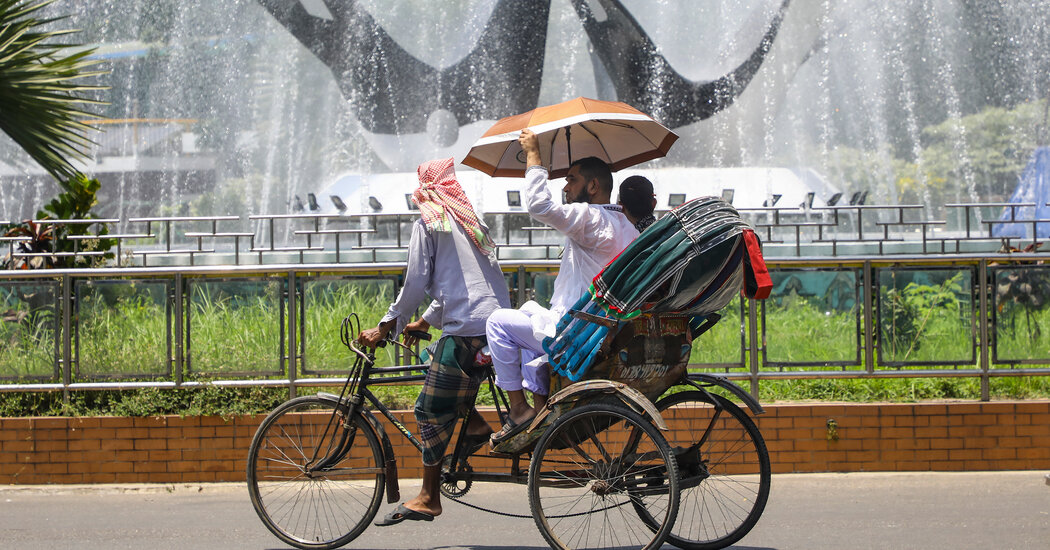Hundreds of millions of people in South and Southeast Asia were suffering on Monday from a punishing heat wave that has forced schools to close, disrupted agriculture, and raised the risk of heat strokes and other health complications.
The weather across the region in April is generally hot, and comes before Asia’s annual summer monsoon, which dumps rain on parched soil. But this April’s temperatures have so far been unusually high.
In Bangladesh, where schools and universities are closed this week, temperatures in some areas have soared above 107 degrees Fahrenheit, or 42 degrees Celsius. Those numbers don’t quite capture how extreme humidity makes the heat feel even worse.
“Due to increasing moisture incursion, the discomfort may increase” over the next 72 hours, the Bangladesh Meteorological Department said in a notice on Monday. In Dhaka, the capital, the humidity was 73 percent, and many areas in the country have experienced daily power outages.
The heat wave could lead to more cases of certain diseases, including cholera and diarrhea, said Be-Nazir Ahmed, a public health expert in Bangladesh and a former director of the national Directorate General of Health Services.
Mr. Ahmed said that people should ideally try to work earlier in the morning and later at night, when temperatures are lower. But that is easier said than done in a country where many people work outdoors.
Nur-e-Alam, who pulls a rickshaw by hand in Dhaka’s Mogbazar area, said he had scaled back to five to seven hours a day, down from eight to 10, because of the heat. His earnings have taken a hit. He expected to make 500 to 600 takas, or about $5, on Monday, about half his usual wage.
“I haven’t experienced heat like this before,” Mr. Alam said. “Every year gets hotter, but this year is extreme.”
The heat wave poses similar challenges in neighboring India, where extreme temperatures have strained power grids, forced school closures, and threatened the production of wheat and other crops. Temperatures in some areas did not dip below 108 degrees Fahrenheit last weekend. The national meteorological department said on Sunday that it expected heat wave conditions in some states for another five days.
The heat has collided with the start of India’s six-week general election, in which nearly a billion people are eligible to vote. The election authorities are working to provide water on voting days, and some political parties are bringing water and cooling devices to campaign rallies.
Extreme heat also has a political dimension in Myanmar, where the ruling military junta cited soaring temperatures last week as justification for moving Daw Aung San Suu Kyi, the country’s ousted civilian leader, from prison to an undisclosed location. Many people in Myanmar believe that generals are moving her for other reasons but using the heat — the capital recently hit 114.8 degrees Fahrenheit — as a pretext.
Asia’s heat wave isn’t happening in a meteorological vacuum. Last year was Earth’s warmest by far in a century and a half. And the region is in the middle of an El Niño cycle, a climate phenomenon that tends to create warm, dry conditions in Asia.
Asia’s summer monsoon will bring relief, but it’s still weeks away. In Thailand on Monday, the national forecast called for “hot to very hot weather.” It put the chances of rain in Bangkok, the capital, at zero percent.
